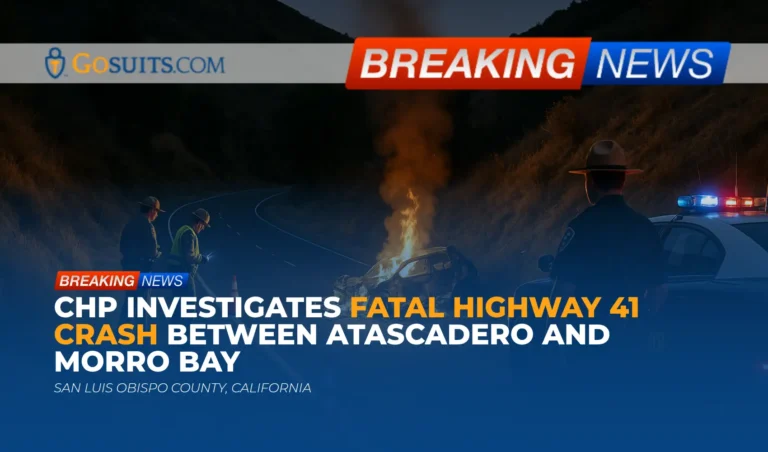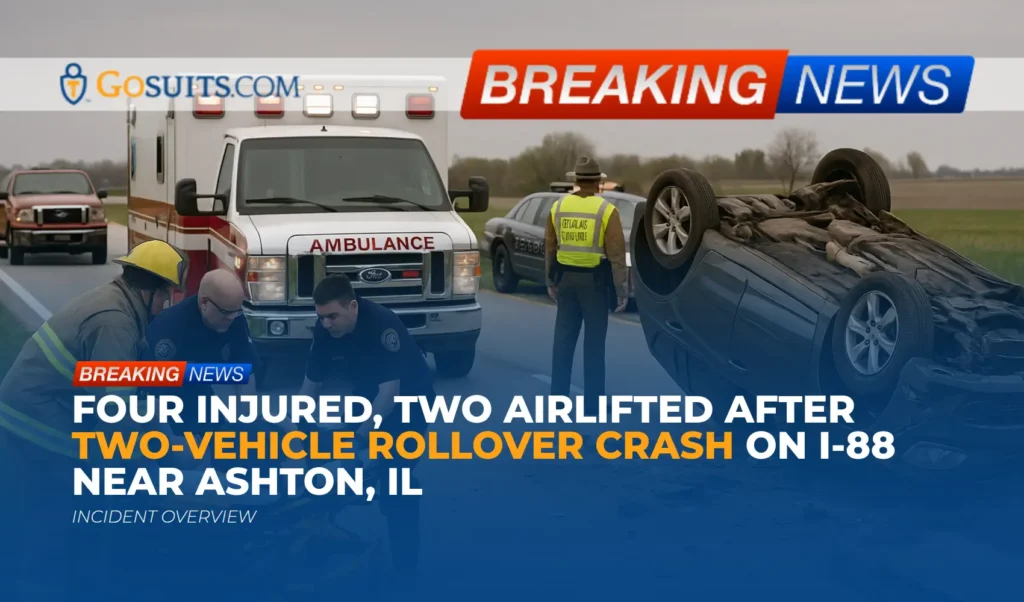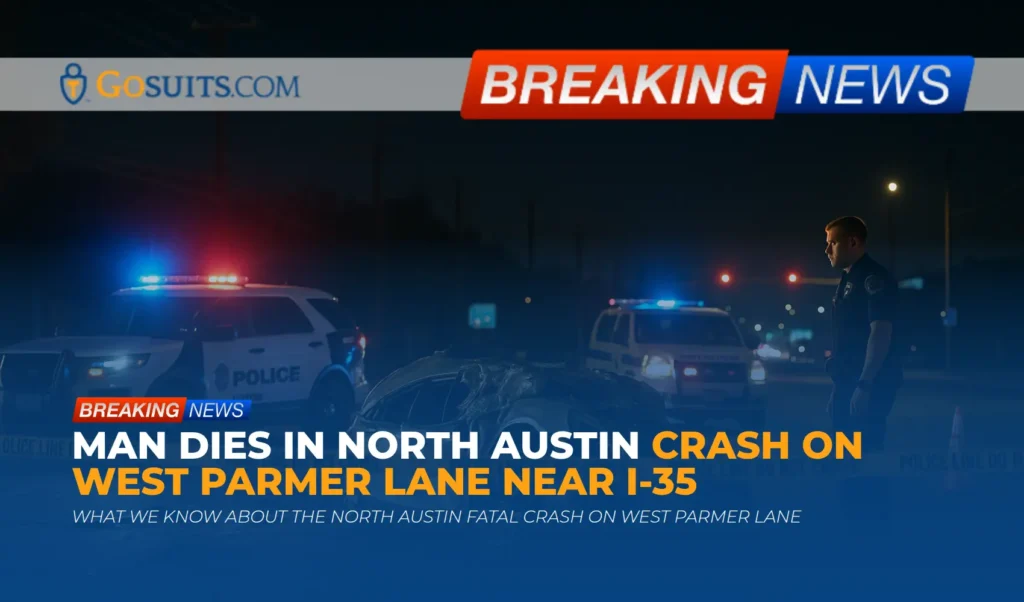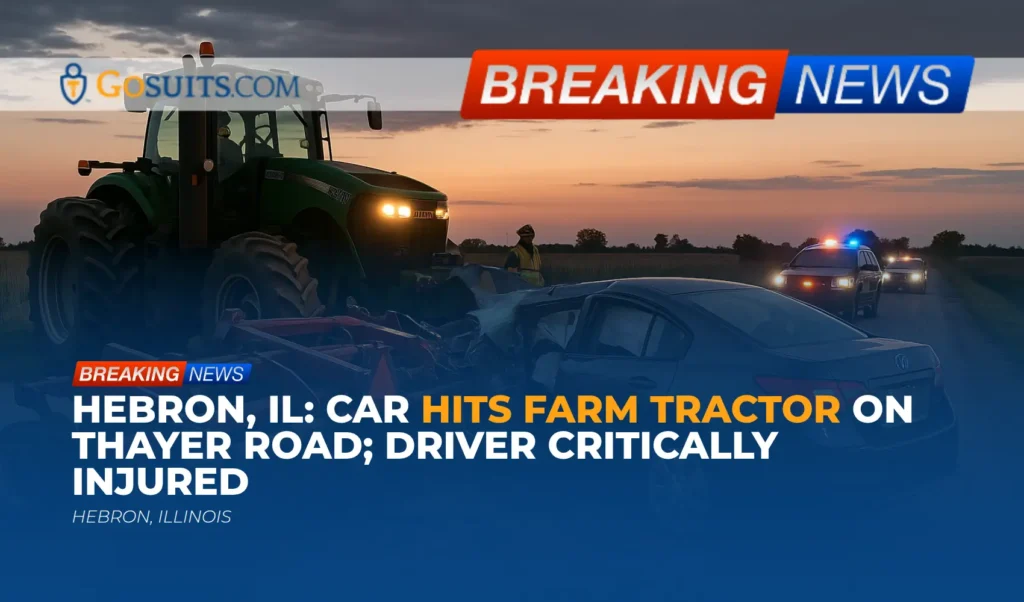- What we know about the Highway 41 fatal crash on the Central Coast
- Location and timing details
- What officials have said and where to share information
- What investigators typically examine after a single-vehicle fatal crash
- Civil liability considerations in a single-vehicle, off-road embankment crash
- Critical records to request and where to obtain them
- How insurance may apply in a single-vehicle fatality and why early guidance matters
- Time limits in California wrongful death and related claims
- Safety context: roadway, vehicle, and fire risk data
- Steps to preserve evidence and protect rights
- Support and practical help resources
- Why acting promptly matters and what to do next
- Commentary from Gosuits San Luis Obispo County, California Personal Injury Attorney
What we know about the Highway 41 fatal crash on the Central Coast
A single-vehicle crash on Highway 41 between Atascadero and Morro Bay in San Luis Obispo County resulted in a fatality late Monday evening. According to initial reports, at approximately 10:38 p.m., a 2003 Chrysler PT Cruiser left the roadway and descended roughly 350 feet down an embankment. The vehicle became fully engulfed in flames, and the solo occupant was pronounced deceased at the scene. The California Highway Patrol indicated that the cause remains under investigation. It has not yet been determined whether impairment, distraction, speed, mechanical issues, or roadway conditions played a role.
Given the early stage of the investigation, authorities are seeking witness information. The circumstances described point to several possible factors that investigators routinely consider in similar incidents, including the condition of the road, environmental variables, vehicle components, driver factors, and potential third-party influences.
Location and timing details
The crash occurred along State Route 41, a corridor that connects inland communities like Atascadero to the coast near Morro Bay. The location is in San Luis Obispo County on California’s Central Coast and is known for grades and curves in segments approaching the coast. The incident timeline places the crash at night, which can reduce visibility and change driver perception of curves and distances. Nighttime conditions can also affect response and recovery operations given limited light on rural stretches.
Even in the absence of rain or adverse weather, visibility, glare, wildlife, and roadside hazards can influence nighttime travel on rural highways. While none of these specific factors are confirmed in this case, these are standard considerations for crash reconstruction professionals.
What officials have said and where to share information
The California Highway Patrol has stated that the crash is under active investigation. CHP leadership emphasized standard safety reminders: slow down, avoid distraction, and maintain a high visual horizon to look ahead of your vehicle. Individuals who witnessed the crash, observed the vehicle beforehand, or have dash camera footage from Highway 41 around 10:38 p.m. are encouraged to provide that information to investigators.
Witnesses or those with tips are asked to contact the California Highway Patrol, San Luis Obispo Area, at (805) 594-8700 and reference the Highway 41 single-vehicle fatal crash near the Atascadero to Morro Bay corridor. Information from the public can help establish a more accurate timeline and clarify environmental or traffic conditions at the time of the incident.
For general information on how CHP handles collision reports and how families may later request a copy, see the CHP’s information page on obtaining reports at chp.ca.gov.
What investigators typically examine after a single-vehicle fatal crash
In a single-vehicle crash with a steep embankment descent and a post-crash fire, multiple threads of inquiry usually proceed in parallel. While each case is unique, these are common investigative focus areas drawn from established traffic safety research and investigative practice:
- Roadway and environment including curve radius, grade, shoulder condition, signage, pavement markings, guardrails, rumble strips, clear zone, and roadside hazards. Investigators will consider whether the roadway geometry or condition may have contributed to loss of control, consistent with roadway departure crash factors explored in federal safety literature from the Federal Highway Administration at highways.dot.gov.
- Vehicle condition including tires, brakes, steering, suspension, lighting, and possible defects that could cause or worsen loss of control or hinder escape. The presence of a fire can complicate the assessment, but pre-fire mechanical evidence is often still identifiable through component analysis. NHTSA maintains resources on defect investigations and crash data at nhtsa.gov.
- Human factors such as fatigue, distraction, medical episodes, and driver inputs prior to roadway departure. Because this collision occurred at night, visibility and contrast may be part of the analysis, consistent with longstanding findings that darkness is a risk factor on rural roads. See NHTSA traffic safety fact sheets at nhtsa.gov.
- Evidence of other vehicles including a near-collision that caused evasive action, debris patterns suggesting an interaction, or a vehicle that left the scene. In some cases, witness accounts or dash cameras reveal a precipitating event even where no impact occurred.
- Fire origin and burn patterns to understand whether the fire resulted from the impact, a fuel system breach, electrical arcing, or another source. Post-crash fires raise questions regarding the survivability of the event and can intersect with potential product liability if there is evidence of an unreasonable fire risk.
The CHP often coordinates with coroner personnel, tow services, and sometimes manufacturer representatives or independent reconstruction professionals where warranted, with the goal of identifying primary and contributing causes.
Civil liability considerations in a single-vehicle, off-road embankment crash
In any collision that involves a fatality, families often have questions about accountability and available civil claims. Although the cause in this case is not yet known, there are several potential avenues that are considered in similar scenarios. The information below is general and may or may not apply to this specific crash.
- Vehicle manufacturer or component supplier. If evidence points to a defect in design or manufacturing, such as a steering failure, brake failure, tire failure, or an unreasonable post-crash fire risk, civil product claims can be explored. Initial inspection should preserve the vehicle and key components for evaluation. NHTSA maintains recall and investigation resources at nhtsa.gov.
- Public entity for a dangerous condition of public property. Under California Government Code section 835, a public entity may be liable for injuries caused by a dangerous condition of public property when statutory elements are met. Examples can include inadequate or obscured signage, missing or damaged guardrails where warranted, pavement drop-offs, or vegetation blocking sightlines. Notice timelines for claims against public entities are shorter than standard civil cases, discussed below with citations to leginfo.legislature.ca.gov.
- Third-party road work or maintenance contractors. If construction staging, temporary traffic control, or recent maintenance created or failed to address a hazard, those entities may be evaluated. Documentation of any work zones or recent repairs in the corridor can become important evidence.
- Private property owners adjacent to the roadway. Where a hazard originates from private property, such as unmitigated debris or an unprotected drop-off that encroaches into the right-of-way, premises-related theories can be considered if supported by evidence.
- Other road users. In some roadway departure cases, a driver swerves to avoid a vehicle that changed lanes abruptly or crossed the center line. If a corroborated phantom or hit-and-run vehicle contributed, uninsured motorist coverage can sometimes be implicated, as discussed below, subject to strict policy terms and evidentiary requirements.
Evaluating these possibilities requires careful preservation and review of physical evidence, witness accounts, roadway data, and vehicle components. Families considering answers should be aware that early steps can influence what evidence is still available weeks or months later.
Critical records to request and where to obtain them
Key records often help families understand what happened and can assist with insurance processes. Many of these documents are available through government agencies in San Luis Obispo County and the State of California.
- California Highway Patrol collision report. The primary traffic collision report typically includes narratives, diagrams, involved parties, and any preliminary factors. Guidance on requesting a collision report is available at the CHP’s official page: chp.ca.gov/notify-chp/collision-report. The local CHP San Luis Obispo Area office phone number is (805) 594-8700.
- Coroner records. In San Luis Obispo County, the Sheriff-Coroner oversees death investigations. Information about coroner services, including records and procedures, can be found via the county portal at slocounty.ca.gov.
- Death certificate. Certified copies are issued through county vital records or the California Department of Public Health. State-level information is available at CDPH Vital Records: cdph.ca.gov.
- Emergency response and 911 materials. Depending on agency policies, families may request CAD logs or audio records under the California Public Records Act. State guidance on the Public Records Act is maintained by the California Attorney General at oag.ca.gov. Response times and exemptions vary.
- Towing and storage documentation. The tow provider’s invoice, storage paperwork, and vehicle release forms are important for chain-of-custody and preservation. If litigation is contemplated, alert the storage yard promptly in writing to preserve the vehicle without destructive dismantling.
- Medical records. If any medical treatment occurred, request records from the facility. Federal HIPAA rules grant personal representatives access for deceased individuals. The U.S. Department of Health and Human Services provides HIPAA guidance at hhs.gov.
- Roadway maintenance and design records. Requests to Caltrans or the county for maintenance logs, guardrail inventories, sign work orders, collision history, and design plans may be appropriate if a roadway condition is suspected. FHWA provides context for proven roadway safety countermeasures at highways.dot.gov.
When submitting public records requests, provide specific dates, locations, mileposts if known, and a concise description. Keeping copies of all correspondence and using certified mail when appropriate can help document timelines.

How insurance may apply in a single-vehicle fatality and why early guidance matters
Insurance coverage in single-vehicle fatal incidents can be complex. Applicable coverage depends on the facts, the policies in place, and whether third parties bear responsibility. Common issues include:
- Liability coverage. If a third party contributed through negligence, their liability insurer may be implicated. This could include a negligent driver, a contractor, or an entity responsible for a dangerous condition, depending on evidence.
- Uninsured and underinsured motorist (UM/UIM). California policies often include UM/UIM coverage. It can apply when a phantom or hit-and-run driver causes an evasive maneuver leading to a crash, typically requiring corroboration beyond the insured’s statement and compliance with policy notice conditions. Review policy language carefully and seek guidance before recorded statements.
- MedPay or medical payments coverage. Some California auto policies offer optional MedPay for medical expenses regardless of fault. This may be limited where the loss was immediately fatal, but it can still help with certain costs if any treatment was rendered.
- Life and accidental death policies. Beyond auto coverage, families sometimes have life insurance or accidental death and dismemberment benefits. Policy exclusions and notice requirements vary.
- Public entity claims. If a roadway condition is alleged, claim procedures and risk pool coverage differ from standard auto claims. Strict notice rules apply, described below with citations to California law.
It is generally prudent to consult with a seasoned attorney before communicating with insurance adjusters, particularly for recorded statements. What is said to any insurer may be used to narrow coverage, affect fault assessments, or limit recovery later. The U.S. Department of Transportation, NHTSA, and state regulators emphasize consumer awareness in auto insurance contexts, and policy terms are legally controlling.
Time limits in California wrongful death and related claims
California law imposes strict time limits. Knowing these deadlines can be important for protecting claims arising from a fatal crash. The following are general timeframes, offered for educational context only:
- Wrongful death statute of limitations. In most cases, California sets a two-year period from the date of death to file a wrongful death lawsuit. See Code of Civil Procedure section 335.1 at leginfo.legislature.ca.gov.
- Survival actions. A survival claim allows the decedent’s estate to recover certain damages the decedent could have claimed had they lived, subject to limitations. See Code of Civil Procedure sections 377.30 and related provisions at leginfo.legislature.ca.gov.
- Claims against public entities. California Government Code section 911.2 generally requires a written claim to a public entity within six months for claims relating to death or injury. Failure to present a timely claim can bar a later lawsuit. See the statute at leginfo.legislature.ca.gov. Additional substantive provisions on dangerous condition claims appear in Government Code section 835.
- Preservation and notice letters. While not substitutes for filing, early preservation notices can help secure critical evidence, including vehicle components and roadway maintenance records, which may be altered or lost over time.
Exceptions and special rules can apply in specific circumstances. Because timelines are unforgiving, prompt attention to deadlines, especially for any public entity claims, can be critical to keep options open.
Safety context: roadway, vehicle, and fire risk data
Understanding broader safety data provides context for why investigations look beyond a single factor in roadway departure crashes and post-crash fires. Research and federal reporting consistently note the following:
- Roadway departure risk. The Federal Highway Administration emphasizes proven safety countermeasures for roadway departure crashes that include enhanced curve delineation, rumble strips, median barriers, clear zones, and high-friction surface treatments. These measures aim to reduce the likelihood and severity of leaving the pavement on curves and grades. See FHWA guidance at highways.dot.gov.
- Rural and nighttime conditions. National data from NHTSA show higher fatal crash rates on rural roads and during nighttime hours, reflecting reduced lighting, longer EMS response times in some areas, and driver perception challenges. NHTSA’s Fatality Analysis Reporting System resources are available at nhtsa.gov.
- Vehicle fire risks in crashes. While most crashes do not lead to fire, post-crash fires can occur due to ruptured fuel lines, electrical shorts, or high-energy impacts, particularly with steep embankment descents that concentrate forces. NHTSA’s research and recall database at nhtsa.gov allows the public to search for fire-related recalls and investigations.
These data points do not assign fault in any particular case. They help frame the lines of inquiry for investigators and explain why road design, maintenance, vehicle systems, and human factors are all relevant.
Steps to preserve evidence and protect rights
In the days following a serious crash, practical steps can make a difference in understanding what happened. The following suggestions are general in nature:
- Secure the vehicle and key components. Ask the tow yard in writing to preserve the vehicle, including tires, wheels, brake components, steering parts, airbag modules, and any data recorders. Avoid authorizing disposal or dismantling until qualified inspection can occur.
- Document the scene. If safe and permitted, gather photographs or video of the roadway, signage, skid marks, gouge marks, guardrails, and vegetation lines. Note mile markers, landmarks, and the direction of travel.
- Identify witnesses. Write down names, phone numbers, and any dash cam sources. CHP has requested that witnesses call the San Luis Obispo Area office at (805) 594-8700 with information.
- Keep all paperwork. Retain tow invoices, property releases, personal effects inventories, and any communications from insurers or agencies.
- Be cautious with statements. Before speaking with insurance companies or giving recorded statements, consider seeking a free consultation with a qualified attorney. Statements can be used to limit coverage or shape liability assessments.
- Consider roadway data. Caltrans maintenance logs, traffic collision histories, and design drawings may be relevant where roadway conditions are at issue. Preservation letters can be directed to the appropriate public entity promptly.
Support and practical help resources
Sudden loss on the roadway is devastating. Alongside the legal and logistical questions, emotional support is essential. Government resources can help locate counseling and crisis services:
- 988 Suicide and Crisis Lifeline. Call or text 988 for immediate support. Federal information about the lifeline is available via SAMHSA at samhsa.gov.
- FindTreatment.gov. The Substance Abuse and Mental Health Services Administration provides a locator for mental health providers at findtreatment.gov.
- San Luis Obispo County resources. County behavioral health services and coroner information can be accessed from the county portal at slocounty.ca.gov.
These resources are not a substitute for personal support from family, friends, and local community groups, but they can be a starting place in an overwhelming time.

Why acting promptly matters and what to do next
The period after a fatal crash is often confusing and painful, yet some steps are time sensitive. Delays can allow physical evidence to be lost and legal deadlines to pass. The following information explains why timely action matters and what specific tasks tend to be most urgent in cases like this Highway 41 tragedy. This section does not include links and does not direct contact to any firm.
- Preserve the vehicle immediately. Towing companies may charge daily storage and may dispose of vehicles after notice. Written preservation requests prevent unintentional destruction of tires, steering components, airbag modules, and the data recorder that can shed light on speed, braking, and throttle before impact.
- Request the official collision report as soon as eligible. Agencies need time to complete reports. Submitting a request when it becomes available helps clarify the factual narrative, diagrams, and any noted factors. Tracking report numbers aids in later insurance communications.
- Calendar legal deadlines. Two dates often matter most in California: the wrongful death statute of limitations and any six-month claim requirement if a public entity may be involved. Calendaring and tracking these windows reduces the risk of losing claims by default.
- Organize evidence while memories are fresh. Witness names, photos, and notes about the roadway are easiest to gather soon after the event. Waiting even a few weeks can make a difference as vegetation changes, construction proceeds, or weather alters the scene.
- Avoid recorded insurer statements without guidance. Insurers often ask to record calls quickly. Because policy language and coverage positions can hinge on phrasing, obtaining a free consultation for guidance beforehand is a prudent step. What is said can be referenced later to deny or limit a claim.
- Coordinate with the coroner. Timely communication with the coroner’s office can help families understand next steps, including timelines for records and release. Coordinated planning can also facilitate any independent examination if needed.
- Identify potential roadway or product issues early. If a curve, guardrail, signage, or suspected component failure might be relevant, prompt site visits and expert inspections are easier to arrange soon after the crash.
Timely, organized action can reduce uncertainty and preserve options. Even small steps, like saving tow receipts and photographing the storage lot tag on the vehicle, can help later.
Commentary from Gosuits San Luis Obispo County, California Personal Injury Attorney
Our hearts are with all who are grieving after the Highway 41 fatal crash between Atascadero and Morro Bay. This article is offered for general information and education during a difficult time. Sudden roadway losses are deeply personal, and every family deserves clear, respectful information about what comes next.
From a civil injury perspective, a single-vehicle embankment descent followed by a post-crash fire raises a careful set of questions. Investigators will look beyond a single cause to consider roadway design or maintenance, nighttime visibility, mechanical conditions, and whether another road user triggered evasive action. Where evidence suggests a dangerous condition of public property or a defective vehicle component, civil claims can extend to public entities or manufacturers. If the cause remains unclear at first, preserving the vehicle and requesting complete public records often brings clarity.
Insurance carriers and large organizations manage claims with procedures that can disadvantage those unfamiliar with policy language and proof requirements. Adjusters may ask for quick recorded statements, request broad medical authorizations, or interpret policy terms in narrow ways that reduce coverage. In phantom vehicle scenarios, for example, uninsured motorist claims may require corroboration that is easy to miss without early guidance. When roadway conditions are at issue, strict public entity claim deadlines can quietly expire. These are the kinds of traps that make it important to slow down, ask questions, and get a free consultation before engaging in detailed insurer communications.
A free consultation helps people understand timelines, evidence preservation, and the interplay of multiple insurance policies in plain language. It provides a confidential space to ask practical questions about records, vehicle storage, and potential liability without pressure. No one can promise outcomes, but informed choices made early can protect options, reduce stress, and prevent avoidable setbacks. As the Highway 41 investigation proceeds, compassion and careful attention to detail can help ensure that answers are pursued thoughtfully and that the process respects both the facts and the family’s needs.






